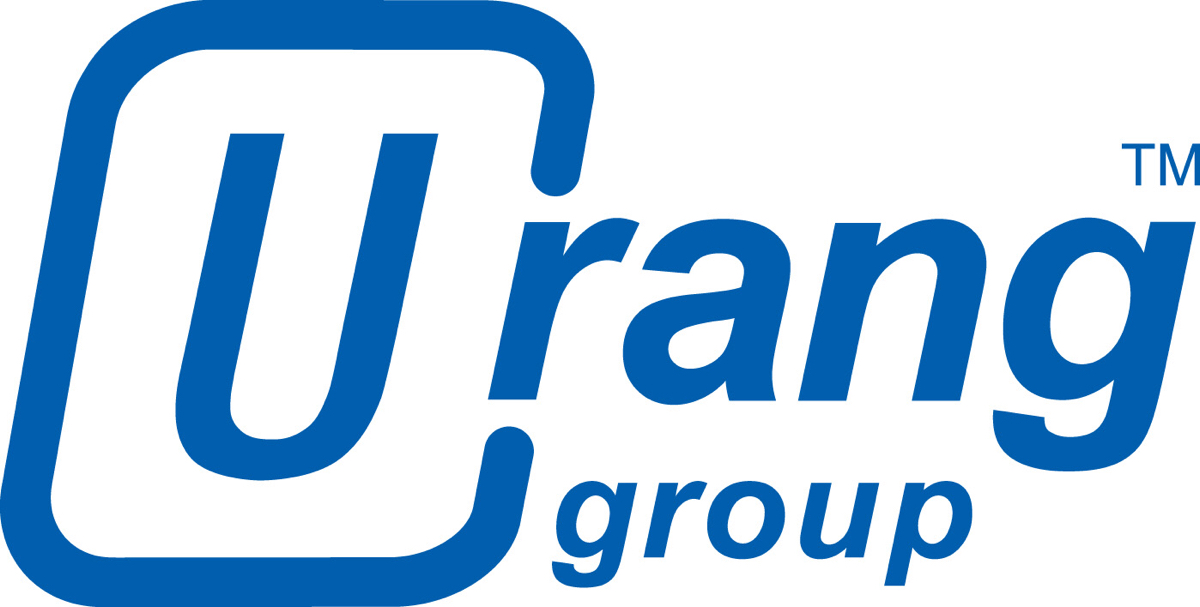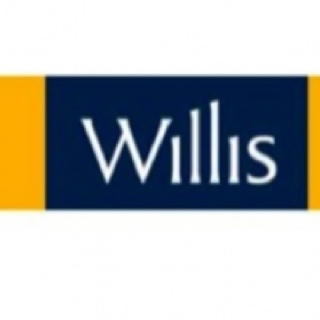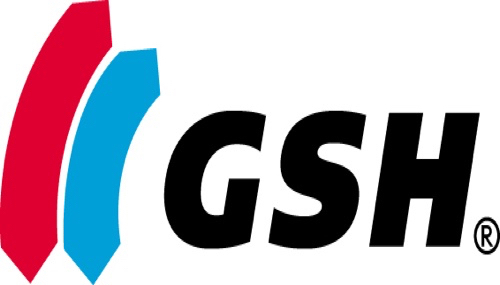Title Page
-
Site conducted
-
Property Name:
-
Address:
-
Review Conducted On:
-
Date of Next Recommended Review:
-
Review Undertaken By:
- Shane Murphy
- Spare
- Adam Shears
- Garry McMillan
- Ken Kew
Risk Assessment Details
REVIEW OF:
-
Risk Assessment Type
- Fire Risk Assessment
- General Risk Assessment
- Combined Fire/General Risk Assessment
-
Company Name:
-
Assessor:
-
Date of Assessment
-
REPORT STRUCTURE:
-
This report is a direct review of the risk assessment detailed above. The purpose of this report is to revise the hazards originally identified in the original risk assessment report, track actions taken to control the risk those hazards present, and determine and document any changes in risk that may occur over time.
Items are reviewed by investigating if the hazard has been controlled, and documenting any evidence that suitable and ongoing risk control management is in place.
If a point has a GREEN response then no further action was identified as being required.
If a point has a YELLOW response further action may be required based on the advisory included.
If a point has a RED response action is required to implement suitable risk control measures.
Where possible, best efforts have been made to include advice on suitable risk control measures, however in some instances further advice and guidance may be required.
Site Description
SUMMARY
-
Property Type
-
Number of Buildings
-
Number of Floors
-
Number of Staircases
-
Number of Entrances
-
Number of Flats
-
Plant Rooms
- Electrical Cabinet
- Lift Control Room
- Water Pump Room
- None
-
Areas Covered
- Entrances
- Stairwells
- Landings
- Foyers
- Grounds
- Basement
- Roof
- Plant Rooms
- Flat Entrances
- N/A
-
Areas Not Covered
- Entrances
- Stairwells
- Landings
- Foyers
- Grounds
- Basement
- Roof
- Plant Rooms
- Flat Entrances
- N/A
Fire
MEANS OF ESCAPE
-
The number of fire escape routes provided are acceptable for the building?
-
Number of escape routes:
-
Location of Escape Routes:
-
ADVISORY: Escape routes must be provided to allow persons yo safely escape in the event of a fire.
-
Are escape routes clear of all combustibles?
-
ADVISORY: Escape routes should be clear of all combustible materials that may provide additional fuel for a fire to burn and subsequently inhibit a safe escape.
-
Are escape routes clear of all trip hazards?
-
ADVISORY: Trip hazards should be removed or suitably controlled to allow occupants to safely and swiftly escape.
-
Are escape routes straightforward?
-
Is appropriate fire exit signage in place to direct persons to the nearest fire exit?
-
ADVISORY: Where escape routes are not straightforward, fire exit signage is required to identify and show the direction of the quickest route out of the building.
-
The distance persons are required to travel to a reasonable point of safety complies with Fire Safety guidance?
-
ADVISORY: Suggested travel distances are detailed in Part 2 of the HM Government fire risk assessment guidance for sleeping accommodation. Escape routes are calculated on the basis of occupancy, fire engineering solutions, and the subsequent fire risk rating of the building. Additions to the escape route and/or potential inhibiting items must be taken into account when calculating the distance.
-
Fire exits can be easily opened?
-
ADVISORY: Final exit doors should be easily openable from the inside without the need for a key.
-
Emergency service vehicles are able to readily access building entrances and plant rooms?
FIRE STRATEGY
-
Fire Strategy suggested in Fire Risk Assessment
-
Is evidence provided that suitable fire compartmentation is present?
-
ADVISORY: An evacuation procedure is deemed suitable for this building
Unless additional evidence is provided to verify compartmentation is suitable, a stay put fire action policy should not be in place. -
ADVISORY: A stay put procedure is suitable. Building Regulations 2011 - Approved Document B states that where any storey is divided into separate occupancies then a). the means of escape from each occupancy should not pass through any other occupancy; and b). if the means of escape include a common corridor or circulation space, then either it should be a protected corridor with suitable fire resisting materials, or a suitable automatic fire detection and alarm system should be installed.
-
Is a fire action plan in place and displayed in a visible location?
-
Type of Fire Action Plan:
-
Evidence of signage in place:
-
Fire Action Plan displayed is suitable for the building type and level of compartmentation present?
-
Fire Action Plan required:
-
ADVISORY: Under The Regulatory a Reform (Fire Safety) Order 2005, the responsible person must ensure a suitable Fire Action Plan is displayed to inform all persons entering the building of what to do in the event of a fire.
FIRE DOORS
-
Fire doors and cabinets appear fire resistant, intumescent strips installed and have appropriate signage in place; and fire doors along escape routes have working self-closers?
-
Enter specific reason why fire doors are not applicable here:
-
undefined
-
ADVISORY: Effective fire-resisting doors are vital to ensure that occupants can evacuate to a place of safety. Fire resisting doors are required in any doorway, in an opening of a fire compartment requiring access (e.g riser cupboards), and on electrical utility cupboards.
-
Evidence is provided for flat entrance doors that open onto the escape route to confirm doors are fire resistant, have working automatic closers, and have intumescent strips fitted?
-
ADVISORY: Effective fire-resisting doors are vital to ensure that occupants can evacuate to a place of safety. Suitable fire resisting flat entrance doors will aide in holding back fire and smoke from entering building escape routes and preventing the fire from spreading.
-
Fire doors are fitted with appropriate signage?
-
ADVISORY: Fire doors that require regular access should be fitted with a self closing device and have signage stating 'Fire Door - Keep Closed'.
Fire doors that are normally kept closed or locked (e.g. services cabinets) should be fitted with signage stating 'Fire Door - Keep Locked'.
Signage should comply with BS 5899-1 Fire safety signs, notices, and graphic symbols.
FIRE DETECTION
-
Is there a means of fire detection in the common areas?
-
Type of Detection:
- Fire Alarm (Hardwired)
- Fire Alarm (Wireless)
- Call Point & Interlinked Smoke Alarms
- Interlinked Smoke Alarms
- Smoke Alarm
-
ADVISORY: To comply with BS5839-1 Fire Detection and Fire Alarm Systems for Non-Domestic Buildings, a full interlinked fire alarm system is required. The current system installed is reasonably practical and will provide early detection in the communal areas, however it is strongly suggested that the current system should be upgraded to meet the applicable standard.
-
Is there evidence provided of testing and maintenance?
-
ADVISORY: No matter how technologically advanced a system is, there will always be a need for human observation and intervention to ensure this life saving system operates at optimal performance. Fire alarms for communal areas of residential buildings are covered by BS5839-1. Compliance with this standard requires the alarm to be tested weekly by operating a random call point. Although the system installed is not compliant with this standard, the Responsible Person should still have a process in place of inspection and service by a competent person to comply with the requirements of The Regulatory Reform (Fire Safety) Order 2005. The minimum time between visits should not exceed six months.
-
Maintenance Evidence:
-
Is there evidence provided of fire alarm testing and maintenance?
-
Maintenance evidence:
-
Status of system is listed as satisfactory?
-
Testing is in date?
-
ADVISORY: No matter how technologically advanced a system is, there will always be a need for human observation and intervention to ensure this life saving system operates at optimal performance. Fire alarms for communal areas of residential buildings are covered by BS5839-1. Compliance with this standard requires the alarm to be tested weekly by operating a random call point. An inspection and service by a competent person should also be undertaken, with time between visits not exceeding six months.
-
Fire alarm has a zone chart displayed?
-
ADVISORY: BS5839-1 recommends zone charts are in place for addressable fire alarm systems. The sub-division of a building into detection zones, which are typically protected by a number of manual call points and / or automatic detectors, is recommended for all but the smallest of premises. This is to ensure that those responding to the alarm are directed to the actual location of the fire and is a recommendation even for premises with addressable systems.
-
Is a fire detection system required by the Fire Risk Assessment?
-
Is there sufficient evidence of compartmentation?
-
Because there is no sufficient evidence of compartmentation, The Building Regulations 2000 requires a fire detection and alarm system to cover both the communal and domestic parts.
-
Coverage Required as per Fire Risk Assessment:
EMERGENCY LIGHTING
-
Is emergency lighting installed?
-
A list of emergency lighting is displayed onsite?
-
ADVISORY: It is recommended that a list of emergency lighting and its location onsite is displayed to aide in the identification and maintenance of the system.
-
Is suitable evidence provided of ongoing maintenance and servicing?
-
ADVISORY: Emergency lighting should be maintained and regularly tested in accordance with BS5266. To ensure compliance with this standard, a function test should be undertaken at monthly intervals, and a full discharge test completed annually.
-
Evidence of testing:
-
Is testing Satisfactory?
-
Is testing in date?
-
ADVISORY: Emergency lighting should be maintained and regularly tested in accordance with BS5266. To ensure compliance with this standard, a function test should be undertaken at monthly intervals, and a full discharge test completed annually.
-
Is there sufficient borrowed light provided to the escape route?
-
ADVISORY: Emergency lighting should be installed in accordance with BS5266 to ensure compliance with The Regulatory Reform (Fire Safety) Order 2005. Emergency lighting provides back up lighting along escape routes to aid and support the safe evacuation of persons from the building in the event of an emergency.
FIRE SUPPRESSION
-
Have potential sources of ignition been cleared from the communal areas?
-
Are fire extinguishers provided?
-
Are fire extinguishers required by the Fire Risk Assessment?
-
ADVISORY: Under current guidance, fire extinguishers are not required in communal areas.
-
Are they serviced and in date?
-
Maintenance evidence:
-
ADVISORY: Fire extinguishers should be maintained annually as per BS5306-3.
-
Are fire extinguishers required by the Fire Risk Assessment?
-
Type:
-
Location Required:
-
Are fire sprinklers installed?
-
Is suitable evidence provided to show suitable sprinkler maintenance and servicing has taken place?
-
Maintenance evidence:
-
ADVISORY: Sprinkler systems should be maintained as per BS9251 - Fire Sprinkler Systems for domestic and residential occupancies.
-
Is a sprinkler system required by the Fire Risk Assessment?
-
Are fire hoses installed?
-
Is suitable evidence provided to show suitable fire hose maintenance and servicing has taken place?
-
Maintenance evidence:
-
ADVISORY: Sprinkler systems should be maintained as per BS EN 671-3 Maintenance of hose reels with semi-rigid hose and hose systems with lay-flat hose.
-
Are fire hoses required by the Fire Risk Assessment?
-
Are Fire risers provided?
-
Is suitable evidence provided of maintenance and servicing?
-
Maintenance evidence:
-
ADVISORY: All risers mains should be checked to comply with BS9990. This recommends checking riser mains every six months to ensure valves are fully serviceable, and a wet pressure test carried out annually to ensure there is no leakage. Wet fire mains should be similarly checked and, in addition, the water storage tanks and booster pumps checked for operational serviceability.
-
Are fire risers required by the Fire Risk Assessment?
ELECTRICAL
-
Fixed communal electrical installations are inspected and tested by a competent electrician.
-
ADVISORY: Electrical installations require an EICR report to be completed every five years by a competent electrical engineer in accordance with the BS7671 Wiring Regulations.
-
Maintenance evidence:
-
Is the EICR Report dated within the five year period recommended by BS7671?
-
ADVISORY: The EICR is now out of date and requires a new inspection to be completed.
-
Does the EICR report that the installation is satisfactory?
-
Actions should be taken to remediate the installation to create a satisfactory result compliant with the BS7671 Wiring Regulations.
-
Communal electrics are fitted with suitable electrical hazard labels?
-
ADVISORY: The Health and Safety (Safety Signs and Signals) Regulations 1996 require persons to be warned of areas where significant hazards may be present.
-
Portable chorded electrical equipment is tested?
-
To ensure electrical appliances are safe for continued use, regular basic safety checks should be carried out to ensure the chord and item are in good condition. The type of and period between checks is dependant on the type of equipment.
-
Maintenance evidence:
SMOKE CONTROL SYSTEMS
-
Are smoke vents required by Fire Risk Assessment?
-
Are means provided to vent smoke from escape routes in the event of a fire?
-
ADVISORY: Residential ventilation systems are intended to help protect means of escape and assist in fire-fighting operations in the event of a fire. Approved Document B recommends that smoke vents are provided in stairwells, and in lobbies and/or corridors opening onto stairwells. The level of protection will vary with the design of the stair core and corridors. A competent Smoke Vent installer should be consulted on where smoke ventilation should be provided and the best system of the specific site.
-
Type of ventilation present:
- Automatic Opening Vent
- Manual Open Windows
-
Are manual windows are easily openable or are fitted with a means of opening by the fire brigade?
-
ADVISORY: Windows should be openable by the fire brigade at a minimum to ensure smoke can be vented in the event of a fire.
-
Is evidence provided to show automatic opening vents are maintained and serviced?
-
Maintenance evidence:
-
ADVISORY: Maintenance of smoke control systems should comply with BS 7346-8: Components for smoke control systems.
SECURITY/ARSON
-
Security measures are in place to secure access to the building?
-
ADVISORY: Access to the building should be controlled and restricted to authorised persons only. This includes the provision of door locks, entry phone systems, security patrols, periodic inspections, CCTV cameras, and fenced areas.
-
Waste bin area provided?
-
Waste bin area is secure and not accessible by the general public?
-
ADVISORY: Access to waste bin areas should be secure and restricted to building occupants only.
General
LIGHTING
-
General lighting is provided for entrance ways, stairways, and landings for persons to move about safely?
-
Is sufficient borrowed light is present to cover communal areas?
-
Location:
-
ADVISORY: Adequate lighting is required to ensure areas remain well lit in periods of low natural light.
-
Lighting provided is sufficient and in good working condition?
HOUSEKEEPING
-
Communal areas are kept clean and in a good state of repair?
-
ADVISORY: Rubbish should be removed from communal areas as soon as possible, and regular cleaning and maintenance should be undertaken. Items in common areas can either add fuel to a fire or become an obstruction on escape routes.
SLIPS, TRIPS AND FALLS
-
Flooring is adequate and in a good state of repair?
-
Stairways and steps are in good condition?
-
Suitable barriers and handrails are provided on steps and stairs?
-
Handrail required?
-
It is recommended that a secure and substantial handrail should be provided and maintained on at least one side of all staircases. If the handrail itself could become an obstruction to the safe access and egress of the area then it may be counterproductive to implement.
-
Potential for falling items are suitably controlled and secured from falling?
-
ADVISORY: Items with the potential to fall should be secured or controlled where reasonably practical to do so. If this cannot be achieved then the item should be removed without delay.
ASBESTOS
-
An asbestos survey has been completed for the common parts?
-
Was the building built after 2000?
-
ADVISORY: Asbestos was banned in the UK from use as a construction material in 1999. It is therefore unlikely that asbestos containing materials are used in buildings built after the year 2000. No further action required.
-
ADVISORY: An Asbestos Management Survey of the common parts is required to inspect and register any potential asbestos containing materials.
-
Are any asbestos containing materials noted in the survey?
-
Have actions been taken as per the plan set in the survey?
-
Evidence of Actions taken:
-
ADVISORY: It is recommended that a final asbestos management survey is completed by a competent surveyor to ensure communal spaces are completely clear of ACM's.
-
Actions Required:
CONTROL OF SUBSTANCES HAZARDOUS TO HEALTH (COSHH)
-
Hazardous substances are stored onsite?
-
Are hazardous substances handled in compliance with The Control of Hazardous Substances to Health Regulations 2002?
-
ADVISORY: Under The Control of Hazardous Substances to Health Regulations 2002, chemicals, gases, and other substances must be safely stored and safety information held for their specific use. If substances are used by cleaners or onsite staff they must be trained in the safe handling of hazardous substances. If hazardous substances are surplus to requirements then they should be removed offsite to an approved waste facility.
PASSIVE SMOKING
-
An A5 No Smoking sign is displayed at the each entrance to the building?
-
Evidence Provided:
-
ADVISORY: Smoking is not permitted inside internal communal areas of buildings, external porches, porters offices, service rooms and meter cabinets under The Smoke-free Regulations 2006. The elimination of smoking inside these areas also inhibits the introduction of potential sources of ignition that may cause a fire. An A5 'No Smoking' sign is required at each entrance to communicate this policy to all persons entering the building. The smoke-free legislation does not extend to smoking inside private residences.
WORKING AT HEIGHT
-
Are safe means of access provided for people required to work at height?
-
Is a safe means of accessing areas at height required?
-
Type recommended:
- Anchorage Points
- Man Line System
- Ladders
-
undefined
- Anchorage Points
- Man Line System
- Ladders
-
Has suitable evidence been provided of testing and ongoing maintenance?
-
Are ladders provided onsite?
-
Are ladders in good condition?
-
Is the roof accessible from the common areas?
-
Are fall prevention barriers in place?
-
Are fall arrest systems provided?
-
ADVISORY: Access should be restricted to competent persons in areas where no fall prevention or arrest systems are in place. Strict working at height risk controls must be in place before access is permitted. Signage is recommended to be installed to communicate this policy.
-
Fall Arrest System:
- Anchorage Points
- Man Line System
-
Is evidence provided of six-monthly inspection and certification of anchorage points?
-
Evidence Provided:
-
ADVISORY: Anchorage points must be inspected and certified to ensure approved contractors have a safe means of securing fall arrest equipment to reduce the risk of falls.
-
Is evidence provided of annual inspection and certification of Man Line System?
-
ADVISORY: Man line systems must be inspected and certified to ensure approved contractors have a safe means of securing fall arrest equipment to reduce the risk of falls.
-
Does the roof contain fragile areas where persons could potentially fall through?
-
ADVISORY: Every year, significant numbers of people are seriously injured or killed by falling through fragile areas on roofs e.g. skylights. Provisions should be made to identify these areas and restrict access to authorised persons with suitable risk measures in place only.
-
Barriers are provided on accessible balconies, terraces, and internal areas?
-
ADVISORY: Suitable barriers are required to inhibit persons from falling from height, otherwise access to the area must be restricted to authorised persons only who have implemented suitable fall arrest or fall prevention control measures.
GATES
-
Are gates provided onsite?
-
Evidence of Gates Onsite:
-
Are gates mechanically operated?
-
ADVISORY: Manually operated gates are not covered under the Machinery Directive 2009/42/EC and therefore only general ongoing maintenance is recommended when required.
-
Is evidence provided of risk assessment and ongoing servicing?
-
ADVISORY: Under the Machinery Directive 2009/42/EC, all existing pedestrian and vehicle gates that are operated mechanically should be regularly assessed and maintained by a competent service provider. Servicing regularity and requirements will be listed in the manufacturers instructions provided when the equipment is installed. If this information is not available, advice should be sought from a competent gate servicing technician.
LIFTS
-
Is a lift present onsite?
-
Evidence of Lift:
-
Evidence is provided to show six monthly servicing and maintenance has taken place?
-
Evidence of Servicing:
-
ADVISORY: Under the Lifting Operations and Lifting Equipment Regulations 1998, a lift must be inspected every at least every six months as a minimum where the lift carries people at any time.
-
Intercom or alarm system is provided and connects to an emergency contact?
-
ADVISORY: The Lift Regulations states that all lifts installed after 1999 should meet the appropriate European technical specification for any safety equipment installed. A working intercom or alarm system should be in place to bring attention to trapped persons inside the lift.
-
Does the lift have a designated plant room?
-
Are mechanically moving parts suitably guarded?
-
ADVISORY: Under the Provision and Use of Work Equipment Regulations 1998, fixed enclosed guarding must be provided to control access to hazardous parts of machinery and equipment.
GROUNDS
-
Building has external communal areas accessible by all persons?
-
Pathways are in good condition and are free of trip hazards?
-
Identified areas:
-
Trees and garden areas are maintained?
-
Identified areas:
WATER TANKS
-
The building has communal water tanks installed?
-
Number of tanks onsite:
- 1
- 2
- 3
- 4
- 5
- 6
- 7
- 8
- 9
- 10
-
Water Tanks:
-
Evidence provided of water risk assessment?
-
ADVISORY: A water risk assessment is required to assess the water systems (tanks, pipes, and discharge points) and materials, water storage temperature, potential stagnation points, and water quality.
-
Is evidence provided of suitable control measures to control the risk of Legionella?
-
Evidence:
-
Evidence:
-
Is evidence provided of suitable control measures to control the risk of Legionella?
-
Evidence of service:
-
ADVISORY: Risk control measures identified in the water risk assessment must be followed to ensure the risk of Legionella is controlled.
GAS
-
Gas appliances and/or equipment are present in communal areas?
-
Evidence of a gas safety certificate completed within the previous 12 months is provided?
-
Evidence:
-
ADVISORY: Under the Gas Safety (Installation and Use) Regulations 1998, a gas inspection and certificate is required every 12 months for gas appliances and equipment. The inspection should be completed by a competent Gas Safe registered engineer.
-
Gas pipework and meters are enclosed when installed in protected escape routes/hallways.
-
Gas service and installation pipes or associated meters should not be incorporated within a protected stairway unless the gas installation is in accordance with the requirements for installation and connection set out in the Pipelines Safety Regulations 1996 and the Gas Safety (Installation and Use) Regulations 1998.
LIGHTNING
-
Lightning protection is installed?
-
Lightning protection system is visually inspected every six months and electrically tested annually?
-
Evidence:
-
ADVISORY: Lightning protection should be inspected and tested to ensure it is good working condition.
STRUCTURAL INTEGRITY
-
Does the building and its external structures appear to be in good condition?
-
Evidence:
Staff
CONTRACTOR MANAGEMENT
-
Procedures are available for the selection and confirmation of competent contractors?
-
ADVISORY: Urang Property Management operate an approved contractor system which involves checking insurances, trade representation, and health and safety management systems as per The Construction (Design and Management) Regulations 2015. Only competent contractors should be authorised to complete work in communal areas onsite.
-
ADVISORY: A contractor management system is required to confirm contractor suitability and competence under The Construction (Design and Management) Regulations 2015 and the Management of Health and Safety at Work Regulations 1999. Only competent contractors should be authorised to complete work in communal areas onsite.
ONSITE STAFF
-
Are staff permanently employed onsite?
-
Are there more than five employees employed onsite?
-
Does the site have a documented Health & Safety Policy?
-
As per the Health & Safety at Work Act 1974, employers must have a health and safety policy and risk assessments for all tasks. Because there are less than five employees, these do not need to be written down. Staff still need to be made aware of the hazards onsite and suitable control measures to control risk.
WORK EQUIPMENT
-
Are staff required to use ladders onsite?
-
Are staff trained in the safe use of ladders?
-
ADVISORY: Staff should only be authorised to use ladders for short duration tasks and be instructed in their safe use.
-
Are all ladders used on site in good condition?
-
Evidence:
-
ADVISORY: Unsafe ladders should be tagged out and removed from site for disposal.
-
Is all other equipment used onsite in good working repair?
-
Items requiring action:
TRAINING
-
Is evidence provided of suitable training for employees relevant to the roles performed?
-
ADVISORY: Suitable and relevant training must be given to employees to comply with the Health And Safety at Work Act 1974. More importantly, it provides important information on how employees can conduct their duties in a safe manner through applying suitable risk control measures.
-
First Aid:
-
Designated staff should be adequately trained and competent in administering basic first aid in the event of an incident on site.
-
First Aid:
-
Fire Warden:
-
Fire wardens should be designated and suitably trained to manage the evacuation procedure.
-
Fire Warden:
-
Fire Evacuation Drills:
-
A full evacuation of the premises should be undertaken periodically to ensure all occupants of the building can safely exit the building to a designated assembly point.
-
Fire Evacuation:
-
Other Training:
-
ADVISORY: Employees should be provided with training and information to ensure they have been made aware of relevant hazards and trained in suitable control measures.
-
Other Training:
-
Are cleaning chemicals and other potentially harmful substances used by staff onsite?
-
Have staff been trained in their safe handling and use?
-
Evidence:
-
ADVISORY: Under The Control of Hazardous Substances to Health Regulations 2002, chemicals, gases, and other substances must be safely stored and safety information held for their specific use. If substances are used by cleaners or onsite staff they must be trained in the safe handling of hazardous substances. If hazardous substances are surplus to requirements then they should be removed offsite to an approved waste facility.
WELFARE
-
Are suitable welfare facilities provided onsite?
-
ADVISORY: Under the Welfare a Reform Act 2012, staff must be provided with clean welfare facilities with good ventilation, hot water, washing facilities, and a rest area. If this is not practical, alternative arrangements must be made to make these provisions available.
-
A Health and Safety Law Poster is displayed and is visible for all employees?
-
ADVISORY: All workers have the right to work in places where risks to their health and safety are properly controlled. Employers are required by law to either display the HSE-approved law poster or to provide each of their workers with the equivalent leaflet.
-
Employers liability insurance is held and displayed by the employer?
-
ADVISORY: Under the Employers Liability (Compulsory Insurance) Regulations 1998, employers are required to hold employers liability insurance with a minimum coverage of £5,000,000. A certificate of currency must be displayed where employees can easily read it. Employers of contractors do not require employers liability insurance unless the contractor is solely based onsite.
-
Suitable first aid provisions are supplied by the employer and made available for employee use?
-
ADVISORY: Under the Health and Safety (First Aid) Regulations 1981, first aid supplies and methods of recording accidents and incidents must be available to all employees onsite.
Management Action Plan
-
Point 1 severity:
-
Point 1 issue:
-
Point 2 severity:
-
Point 2 issue:
-
Point 3 severity:
-
Point 3 issue:
-
Point 4 severity:
-
Point 4 issue:
-
Point 5 severity:
-
Point 5 issue:
-
Point 6 severity:
-
Point 6 issue:
-
Point 7 severity:
-
Point 7 issue:
-
Point 8 severity:
-
Point 8 issue:
-
Point 9 severity:
-
Point 9 issue:
-
Point 10 severity:
-
Point 10 issue:











